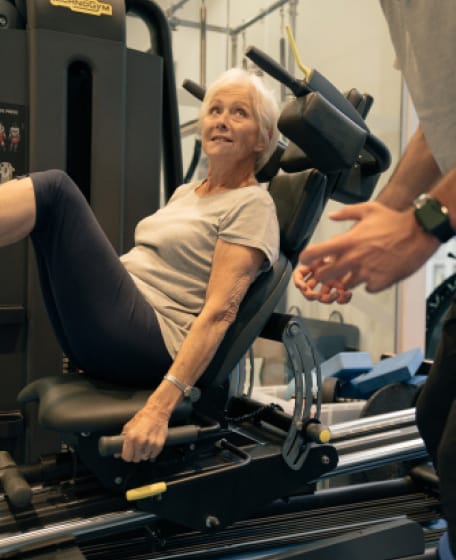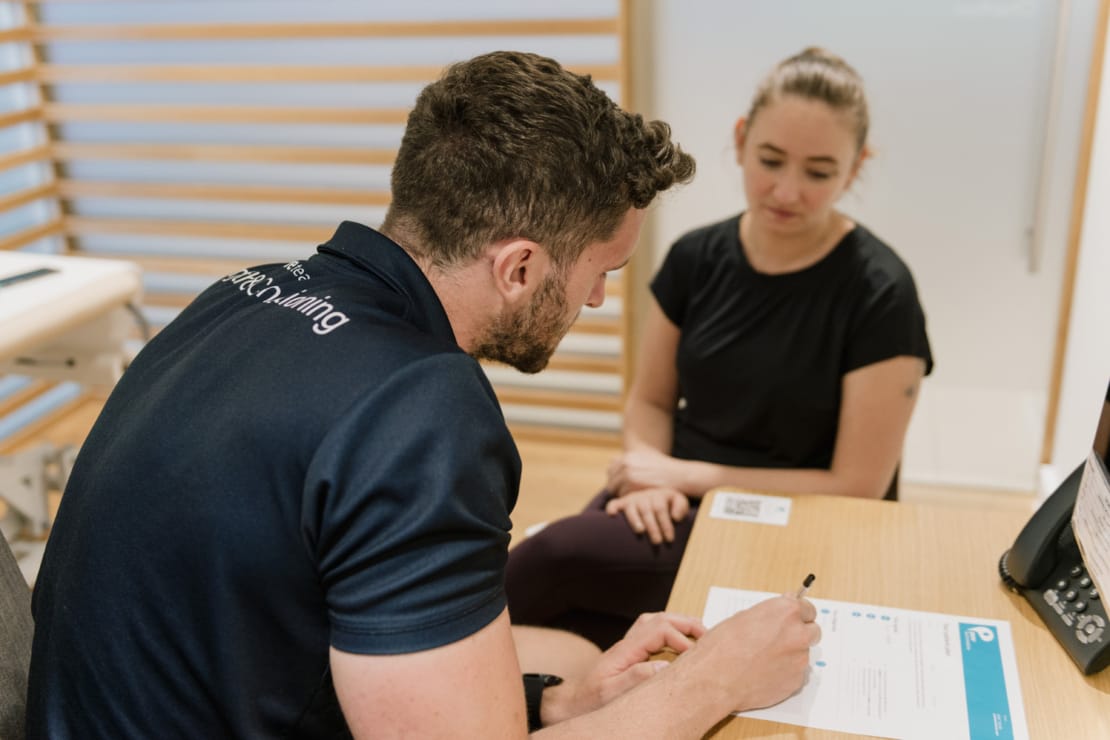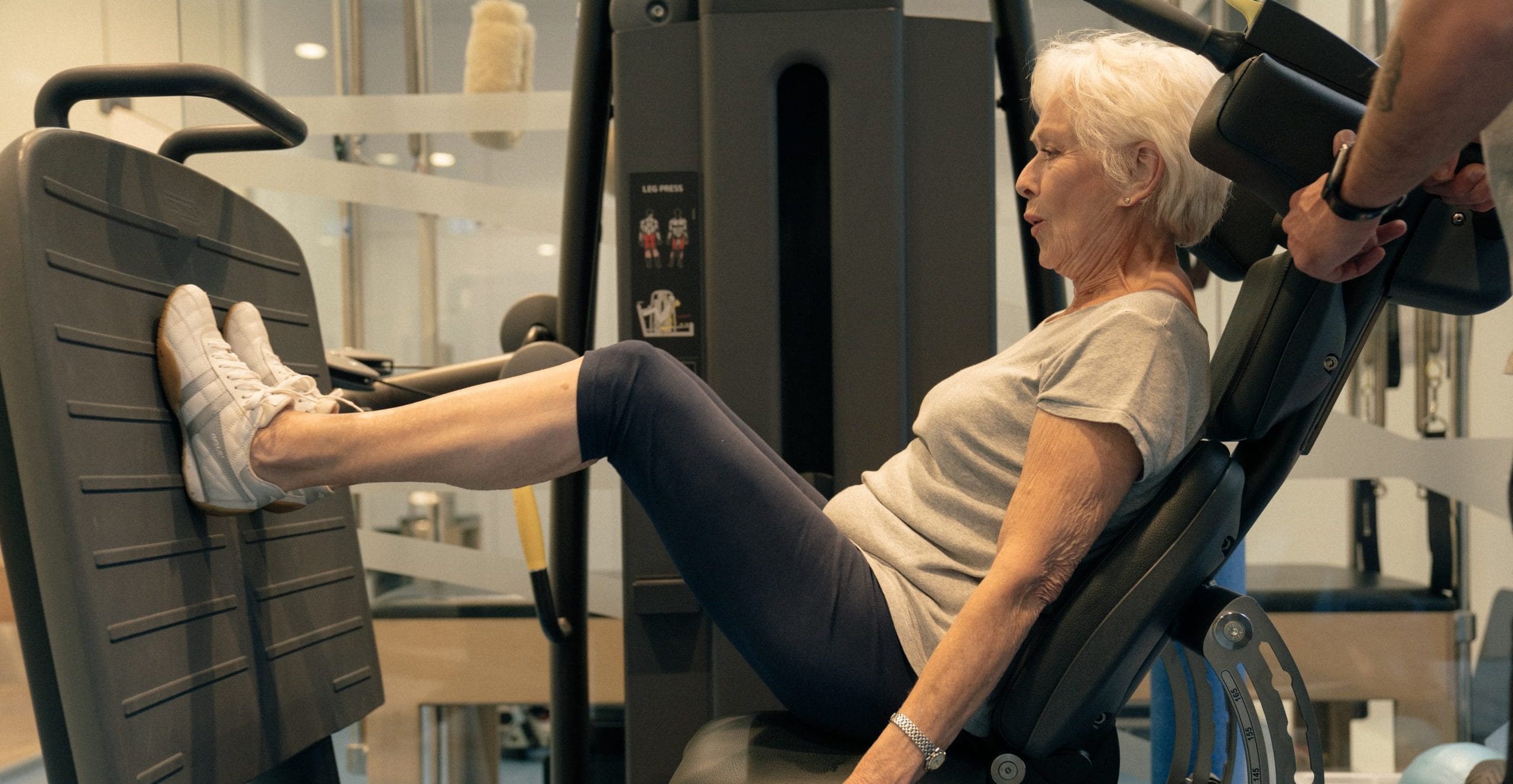The Benefits of Walking 10,000 Steps a Day

Carter Bailey
Exercise Physiologist
- 13 February, 2025
- Exercise
- Podiatry
- 6 min read
The Benefits of Walking 10,000 Steps a Day

Walking is a low-impact form of physical activity we often do without even thinking about it. Whether it’s commuting to work or walking the dog, it’s easy to fit into our daily routine.
Although it is second nature to most of us, we don’t often realise the amazing benefits it offers and why setting a daily step target, can amplify these benefits even further.
Regular physical activity offers numerous benefits for both physical and mental health, such as enhanced cardiovascular health, improved immune and cognitive function, better weight management, and stronger muscles and bones. These factors contribute to a reduced risk of chronic diseases and promote a longer life expectancy.
Which chronic conditions can walking help prevent?
Cardiovascular Disease
Regular walking and other forms of physical activity are crucial for reducing the risk of cardiovascular disease by enhancing heart function and addressing key risk factors. Walking helps improve cholesterol levels, blood pressure, and glucose control, while also reducing inflammation and supporting weight management. Furthermore, it promotes better vascular health, boosting blood flow and overall cardiovascular efficiency. Together, these benefits play a significant role in preventing heart disease, stroke, and other related conditions.
Type 2 diabetes
Walking helps improve your insulin sensitivity and increases the ability of your muscle to uptake glucose for energy. This helps keep blood sugar levels within a healthy range, which is key in preventing diabetes.
Types of cancers
Chronic inflammation is linked to the development of various cancers. Regular walking can help reduce inflammation in the body, lowering the risk of cancer growth. Walking also helps strengthen the immune system, allowing the body to more effectively fight off abnormal cells that could lead to cancer.
With the widespread availability of smartphones and fitness watches, tracking daily step counts has become a popular and accessible way to monitor physical activity. These devices allow you to set specific step goals and keep track of your progress in real-time, making it easier to stay motivated and consistent. Many devices even offer reminders or encouragement when you’re close to reaching your goal, making it a fun and interactive way to stay active.
Additionally, tracking your steps over time provides valuable insights into your habits, helping you adjust and improve your activity levels to maintain a healthier lifestyle.
How does walking benefit my mental wellbeing?

Walking provides significant benefits for mental well-being by reducing anxiety, stress and depressive symptoms. It stimulates the release of the body’s natural mood boosters, endorphins, that help us feel calm and relaxed. Regular walks can also improve cognitive function by increasing blood flow to the brain, enhancing memory, focus, and problem-solving abilities.
Additionally, walking is essential for sleep quality, helping you fall asleep faster and enjoy deeper rest, which supports overall mental clarity and emotional well-being. It also offers a valuable opportunity for personal reflection or mindfulness, allowing you to disconnect from daily stress and reset your thoughts. By contributing to better body image and self-esteem, walking not only enhances physical health but also promotes confidence and a positive outlook, making it a simple yet powerful tool for improving mental health.
If not 10,000, how many steps should I be taking?
Despite lack of evidence, ‘10,000 steps per day’ is widely promoted as a target to achieve health benefits. This number originated from a marketing campaign in Japan in the 1960s and has become a popular reference value ever since. It is important to note that even a small increase in activity is beneficial for your health and the optimal volume and intensity of exercise may differ according to characteristics such as age, height, weight and sex.
In general, taking more steps per day is associated with a progressively lower risk of all-cause mortality. Around 3000 steps per day appears to be the minimum volume required to achieve any significant effect in risk reduction, with optimal amounts ranging from 6000-8000 steps for older adults (>60 years) and 8000-10,000 steps for younger adults (<60 years).
How can I track my steps?
There are several effective ways to track your steps:
Smartphone / apps
Most smartphones come with built-in step-tracking features automatically add-up your steps using the phone’s built-in sensors. There are also various apps which are available to download on your smartphone which can provide additional features such as tracking your walking routes or seeing goals.
Smart watches and Fitness Trackers
Devices such as Fitbits, Apple Watches and other fitness trackers are designed to monitor your daily activity. Not only do they track your steps, but also distance, calories burned, heart rate, and even sleep patterns. These devices sync with their respective apps to give you easily accessible detailed data.

Pedometers
Pedometers are a simple, portable device that counts your steps as you walk. They should be worn on a stable area close to the body to get the most accurate count; such as a waistband or belt. While they may not be as advanced as smartphones or fitness trackers, they can be a cost-effective and easy way to monitor your daily steps.
Monitoring your step total has been shown to lead to short and long-term increases in physical activity, with previously inactive individuals increasing their step count by 2500 steps per day.
How do I start building this into my routine?
Walking is an accessible and low-impact form of physical activity that can be completed incidentally throughout the day. It is important to gradually increase your walking volume over time to allow your body to adapt effectively to the new demands without risking injury.
Simple ways of increasing your daily step count can include:
- Walking and taking public transport
- Opting for stairs as opposed to an escalator
- Using walking as an alternative transport to e.g driving.
- Going for walks during work and lunch breaks
Despite the health benefits, it can be difficult to motivate yourself to engage in physical activity at times.

Tips to make walking more enjoyable include:
- Make it a social interaction by planning a walk with a friend or family
- Listen to music or a podcast
- Wear a pair of comfortable shoes
- Explore new routes and different scenery
- Combine with other activities such as walking to a cafe
What other forms of exercise should I incorporate into my routine?
National Physical Activity Guidelines recommend adults should complete at least 150 minutes of moderate aerobic activity on most, if not all, days of the week. They also recommend incorporating strengthening exercises to target all major muscle groups on at least two of those days.
Incorporating a strengthening program into your routine provides numerous benefits beyond just building muscle. Regular strength training increases muscle strength and endurance, which helps improve overall fitness and supports better functional performance in daily activities, from lifting shopping bags to climbing stairs. Stronger muscles also enhance stability and balance, reducing the risk of falls and injuries, especially as you age.
Additionally, strengthening exercises help improve joint health by supporting and stabilising surrounding tissues, which can prevent strain and overuse injuries. Over time, this contributes to a more active and independent lifestyle, with long-term benefits for both physical health and overall well-being.
Strengthening exercises for walkers should target the leg and core muscles. Some simple exercises you can perform at home include:
- Step ups
- Lunges
- Calf raises
- Heel walks
- Side Plank
- Glute Bridge
If you need assistance establishing an exercise routine or beginning a strength program, an assessment with one of our Strength and Conditioning coaches or Exercise Physiologists is a great place to start. They have the tools to provide you with a personalised training plan based on your current activity and level of fitness, previous injury history and health and wellness goals.

References:
- Chaudhry, U. A. R., Wahlich, C., Fortescue, R., Cook, D. G., Knightly, R., & Harris, T. (2020). The effects of step-count monitoring interventions on physical activity: systematic review and meta-analysis of community-based randomised controlled trials in adults. International Journal of Behavioral Nutrition and Physical Activity, 17(1). https://doi.org/10.1186/s12966-020-01020-8
- Paluch, A. E., Bajpai, S., Bassett, D. R., Carnethon, M. R., Ekelund, U., Evenson, K. R., Galuska, D. A., Jefferis, B. J., Kraus, W. E., Lee, I-Min., Matthews, C. E., Omura, J. D., Patel, A. V., Pieper, C. F., Rees-Punia, E., Dallmeier, D., Klenk, J., Whincup, P. H., Dooley, E. E., & Pettee Gabriel, K. (2022). Daily steps and all-cause mortality: a meta-analysis of 15 international cohorts. The Lancet Public Health, 7(3), e219–e228. https://doi.org/10.1016/S2468-2667(21)00302-9
- Tudor-Locke, C., Craig, C. L., Brown, W. J., Clemes, S. A., De Cocker, K., Giles-Corti, B., Hatano, Y., Inoue, S., Matsudo, S. M., Mutrie, N., Oppert, J.-M., Rowe, D. A., Schmidt, M. D., Schofield, G. M., Spence, J. C., Teixeira, P. J., Tully, M. A., & Blair, S. N. (2011). How Many steps/day Are enough? for Adults. International Journal of Behavioral Nutrition and Physical Activity, 8(1), 79. https://doi.org/10.1186/1479-5868-8-79
- Rodríguez-Gutiérrez, E., Torres-Costoso, A., Pozo, del, Núñez, S., Pascual-Morena, C., Bizzozero-Peroni, B., & Martínez-Vizcaíno, V. (2024). Daily steps and all-cause mortality: An umbrella review and meta-analysis. Preventive Medicine, 185, 108047–108047. https://doi.org/10.1016/j.ypmed.2024.108047
- Ruegsegger, G. N., & Booth, F. W. (2017). Health Benefits of Exercise. Cold Spring Harbor Perspectives in Medicine, 8(7). https://doi.org/10.1101/cshperspect.a029694

Advice
Over the last 20+ years our experts have helped more than 100,000 patients, but we don’t stop there. We also like to share our knowledge and insight to help people lead healthier lives, and here you will find our extensive library of advice on a variety of topics to help you do the same.
OUR ADVICE HUBS See all Advice Hubs

